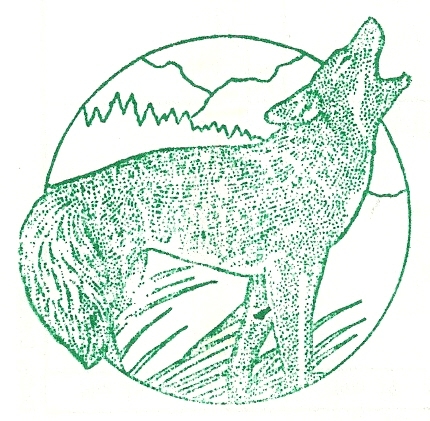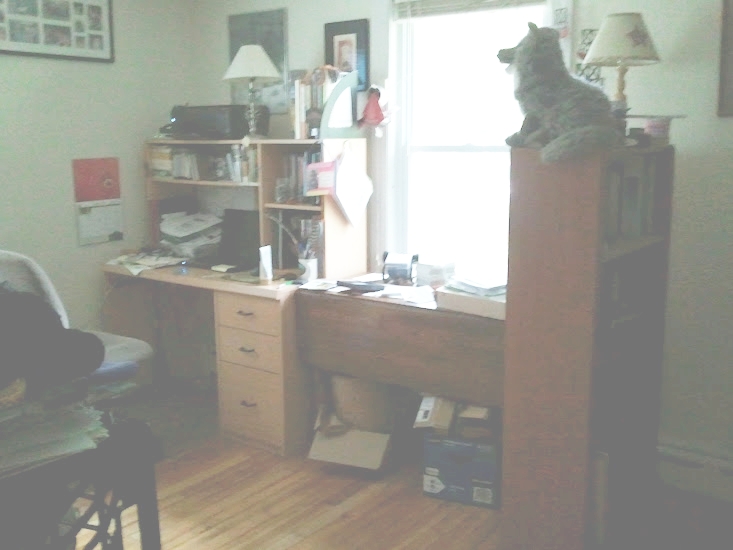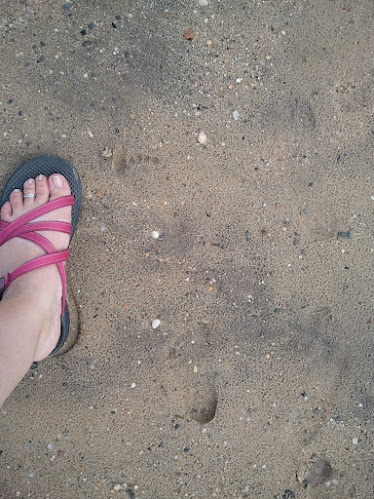The Menard clan went up to Mine Falls Park in Nashua, NH on Sunday to search out several letterboxes. If you haven’t read my past post(s) on letterboxing, here’s a quick rundown on how it works…
The basic idea is that you go in search of a letterbox, and when you find it, exchange info with the owners of the box using ink stamps. Most people who put letterboxes together make their own stamps, and those in search of letterboxes either make their own, or use one from a craft store. So you need to have a stamp you’ve either made or bought, an ink pad (not all boxes provide these) and a waterproof container to keep them in (we use a freezer baggie).
First thing is to find the clues to boxes in the area where you’re going. We typically have a destination in mind before heading out, so I visit the Letterboxing.org site and search by city/town. But if you’re flexible about where you go you can search broader areas like counties or even states (letterboxing originated in the UK, so I know it’s as widely available there as in the US; I don’t know about other countries, though.).

My letterbox stamp is a howling coyote (no surprise) which I did not make, and my letterboxing moniker is Mama Coyote. So when I sign in to a letterbox that I’ve found, I leave my stamp, the date, maybe a note about us or our trip and report that Mama Coyote and her pack found the box.
In addition to bringing your own stamp, you’ll also want a journal so you can record the boxes you find. I love our letterboxing journal – it’s a beautiful record of some of our family hikes, and makes note of moments I might not have recorded otherwise….
Below the journal entry you can see the stamp made by the owners of a box in upstate New York. We visited Colgate Lake among several other sites during a day of letterboxing in the Catskill Mountains.
It’s very low-tech, and not too hard to get our kids excited about. Who doesn’t love to go on a treasure hunt? If you and your family are more tech-minded, you might prefer geocaching. Geocaching is similar to letterboxing, but you use a hand-held GPS to navigate to the caches.
I was pretty excited for our trip yesterday – we haven’t gone in quite
 some time, and there’s always a little thrill when you find a box you’ve been searching for for a while. Much to our disappointment, we didn’t find any of the four boxes we searched for. One of them had clearly been removed (either by vandals, as the park is heavily trafficked) or the box owners. The other three completely evaded us.
some time, and there’s always a little thrill when you find a box you’ve been searching for for a while. Much to our disappointment, we didn’t find any of the four boxes we searched for. One of them had clearly been removed (either by vandals, as the park is heavily trafficked) or the box owners. The other three completely evaded us.
The highlight of our day (for me) was this small treasure found photographed at right (not by me…) a Jack-in-the-Pulpit. I didn’t get a photo of my own as I forgot to bring my phone and the area was infested with mosquitoes and poison ivy, so we didn’t linger. But my oldest son and I enjoyed our find all the same



This is a whole new concept to me, but it seems fun. Who doesn’t like an adventure! I might look into the geocaching thing.
They’re both so much fun! What I really like is that there’s a tangible end result for kids – it helps keep them focused on the task.